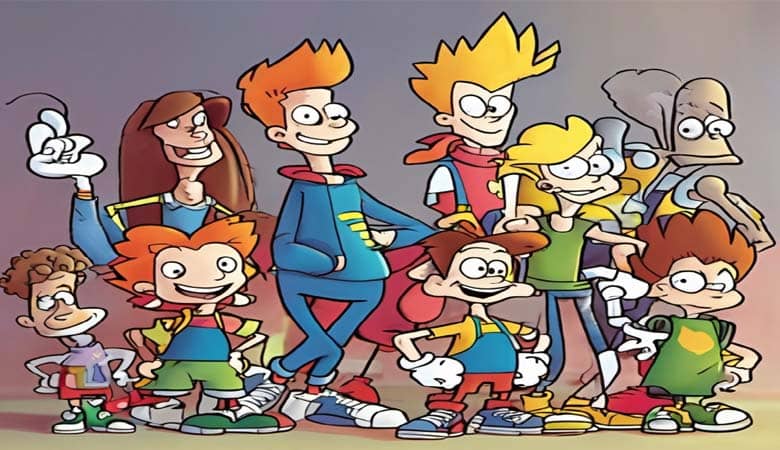Cartoons have been an integral part of entertainment for over a century, evolving from simple black-and-white sketches to complex digital animations. Among the myriad of characters that have graced the screen, a particular archetype has stood out for its distinctive appearance and endearing qualities: the lanky cartoon character. These characters, characterized by their tall, thin physiques and often exaggerated features, have left an indelible mark on the world of animation. This article delves into the history, characteristics, cultural impact, and evolution of lanky cartoon characters, highlighting their unique charm and enduring legacy.
Historical Overview
The history of lanky cartoon characters can be traced back to the early days of animation. In the 1920s and 1930s, as animation began to flourish, creators experimented with various character designs to captivate audiences. One of the earliest examples is Felix the Cat, who, while not particularly lanky by modern standards, set the stage for character exaggeration. Felix’s simplistic design and fluid movements laid the groundwork for more stylized characters in the future.
The 1930s saw the rise of one of the most iconic lanky characters: Goofy. Introduced by Disney in 1932, Goofy quickly became a beloved figure thanks to his tall, gangly frame, clumsy nature, and affable personality. His design, with elongated limbs and a distinctive gait, epitomized the lanky character archetype and demonstrated the comedic potential of such exaggerated features.
Another significant contribution to the lanky character lineage came from the Warner Bros. animation studio with the creation of Daffy Duck and Bugs Bunny in the late 1930s and early 1940s. While Bugs Bunny’s lean physique added to his slick and confident persona, Daffy’s elongated neck and limbs contributed to his zany and unpredictable behavior. These characters solidified the popularity of the lanky archetype in American animation.
Defining Characteristics
Lanky cartoon characters are defined by a set of physical and personality traits that make them easily recognizable and relatable. Physically, they are typically taller and thinner than their counterparts, with elongated limbs, necks, and often exaggerated facial features. This design allows for a wide range of expressive movements and comedic possibilities. Their gangly appearance often complements their clumsy or awkward behavior, enhancing their comedic appeal.
Personality-wise, lanky characters often possess traits such as goofiness, good-naturedness, and a degree of naivety. They might also exhibit a childlike innocence or an underdog quality that endears them to audiences. For example, Goofy’s clumsiness and perpetual optimism make him a lovable character who, despite his frequent mishaps, always manages to come out on top.
Moreover, these characters often serve as a foil to more serious or muscular characters, providing a contrast that highlights their unique attributes. This dynamic can be seen in duos like Bugs Bunny and Daffy Duck, where Bugs’ suave confidence contrasts with Daffy’s manic energy, or in the relationship between Shaggy and Scooby-Doo, where Shaggy’s lankiness and perpetual hunger complement Scooby’s bumbling bravery.
Cultural Impact
Lanky cartoon characters have had a profound impact on popular culture, transcending the realm of animation to influence various aspects of entertainment and beyond. Their distinctive designs and memorable personalities have made them iconic figures, often becoming symbols of the studios that created them.
Goofy, for instance, has become synonymous with Disney’s brand, appearing in countless films, television shows, and merchandise. His image is instantly recognizable, and his catchphrases, such as “Gawrsh!” and his distinctive holler, have entered the cultural lexicon. Similarly, Bugs Bunny’s “What’s up, Doc?” has become one of the most famous catchphrases in animation history, reflecting his enduring popularity and cultural significance.
The influence of lanky characters extends to advertising and branding as well. Characters like the Michelin Man and the Jolly Green Giant, while not strictly cartoon characters, borrow from the lanky archetype to convey a friendly, approachable image. Their exaggerated features and playful designs draw from the same principles that make lanky cartoon characters so appealing.
Moreover, the archetype has inspired countless parodies and references in other media. Television shows, movies, and even video games often incorporate lanky characters as a nod to their comedic potential and nostalgic value. This widespread presence attests to the lasting legacy of these characters and their continued relevance in contemporary culture.
Evolution and Adaptation
As animation techniques and storytelling methods have evolved, so too have lanky cartoon characters. Advances in technology have allowed for more intricate designs and complex animations, enabling these characters to be even more expressive and dynamic. Digital animation, in particular, has expanded the possibilities for character movement and interaction, breathing new life into the lanky archetype.
One notable example of this evolution is Jack Skellington from Tim Burton’s “The Nightmare Before Christmas” (1993). Jack’s skeletal frame and exaggerated proportions make him a quintessential lanky character, while his detailed design and fluid stop-motion animation showcase the advancements in the medium. Jack’s character combines the whimsical charm of traditional lanky characters with a darker, more gothic aesthetic, demonstrating the versatility of the archetype.
In recent years, lanky characters have also found a place in television and film aimed at both children and adults. Shows like “Adventure Time” feature characters like Finn the Human and Jake the Dog, whose flexible and elongated forms allow for imaginative and humorous scenarios. Similarly, in “Regular Show,” the characters Mordecai and Rigby exhibit lanky characteristics that contribute to the show’s offbeat humor and appeal.
Furthermore, the lanky archetype has been adapted to fit diverse cultural contexts and storytelling styles. In Japanese animation, or anime, characters with lanky designs, such as L from “Death Note” or Edward Elric from “Fullmetal Alchemist,” blend the exaggerated physical traits with more serious and complex narratives, showcasing the global influence of this character type.
The Enduring Appeal
The enduring appeal of lanky cartoon characters lies in their unique ability to blend physical comedy with relatable personality traits. Their exaggerated features and movements make them visually engaging and inherently humorous, while their often good-hearted and optimistic natures make them endearing to audiences of all ages.
Moreover, these characters often embody the theme of resilience and perseverance. Despite their awkwardness or clumsiness, they typically overcome obstacles through determination and a positive attitude. This underdog quality resonates with viewers, who see a reflection of their own struggles and triumphs in these characters.
Additionally, the versatility of the lanky archetype allows for a wide range of storytelling possibilities. Whether in slapstick comedy, heartwarming tales, or even darker, more introspective narratives, lanky characters can adapt to fit various genres and tones. This adaptability ensures their continued relevance and popularity in an ever-changing entertainment landscape.
Conclusion
Lanky cartoon characters have carved out a unique niche in the world of animation, capturing the hearts of audiences with their distinctive designs and charming personalities. From the early days of Goofy and Bugs Bunny to the modern iterations in digital animation, these characters have evolved while retaining the core qualities that make them so beloved. Their cultural impact, adaptability, and enduring appeal ensure that lanky cartoon characters will continue to entertain and inspire for generations to come. Whether making us laugh with their clumsy antics or touching our hearts with their resilience, these characters remain a testament to the creativity and ingenuity of animation.












+ There are no comments
Add yours